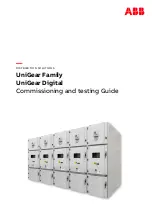
Doc
No.
FM0600
issue
E
Page
1
Cowley
Road,
Blyth
Riverside
Business
Park,
Blyth,
Northumberland,
NE24
5TF.
Tel:
01670
352371
Fax:
01670
362807
Email:
Website:
www.tynetec.co.uk
Installation
Guide
for
the
Altec
169MHz
Mk2
Sensor
Controller
•
Used
for
bed/chair
occupancy
monitoring
•
Fully
configurable
with
text
display
menus
•
Real
time
clock
with
auto
‐
BST
adjustment
•
Supplied
with
mains
adapter
&
rechargeable
battery
•
Compatible
with
Gadget,
RadiPlug
=
and
X10
mains
switchers
•
Dimensions:
190mm
x
100mm
x
32mm
(HxWxD)
•
Weight:
285
grams
(inc
battery)
•
Sensor
controller
with
bed
sensor:
P/No.
ZXT473
•
Sensor
controller
with
chair
sensor:
P/No.
ZXT474
WHAT
IS
THE
SENSOR
CONTROLLER
USED
FOR
?
The
sensor
controller
is
normally
used
for
bed
or
chair
occupancy
monitoring.
If
a
person
gets
into
bed/sits
in
their
chair,
then
gets
up
again
and
does
not
return
within
a
preset
period
an
alarm
call
will
be
transmitted.
Lamps
can
be
turned
on/off
automatically
using
X10,
Gadget
or
RadiPlug
=
mains
switchers.
A
pressure
mat
or
door
contact
can
also
be
connected
to
raise
an
instant
alarm.
HOW
DOES
THE
SENSOR
CONTROLLER
WORK
?
The
sensor
controller
is
normally
supplied
with
a
bed
or
chair
sensor
as
a
complete
package.
The
controller
and
all
sensors
are
also
available
separately
if
custom
packages
are
required.
The
sensor
controller
must
be
installed
with
a
SayPhone
21/V2
or
Reach
At
‐
home
alarm
,
an
Advent
xt
warden
call
system
or
an
Altec
Response
portable
alarm
unit.
These
products
report
alarms
to
a
remote
control
centre
or
local
manager.
The
sensor
controller
has
a
real
time
clock
with
automatic
British
Summer
Time
(i.e.
the
+/
‐
1
hour
adjustments
are
made
automatically
on
the
correct
day
every
March
and
October).
With
a
bed
or
chair
sensor
an
alarm
can
be
raised
either
instantly
a
person
leaves
their
bed/chair
or
after
a
1
to
99
minute
programmable
absence
period
if
the
person
does
not
return
to
their
bed/chair.
If
the
person
does
not
return
and
an
alarm
is
raised
but
they
are
OK
then
an
optional
1
to
99
minute
programmable
reset
period
can
be
set.
If
the
person
is
not
detected
back
in
their
bed/chair
at
the
end
of
this
period
then
an
alarm
will
be
raised
again.
Monitoring
starts
when
a
person
has
been
in
their
bed/chair
for
30
seconds
(default
logged
in
bed
time
).
Continuous
monitoring
is
possible
if
the
controller
is
set
to
be
on
all
the
time
.
Alternatively
up
to
3
active
periods
can
be
programmed
to
repeat
every
day.
There
is
also
the
option
to
raise
an
alarm
if
a
person
is
not
in
their
bed/chair
after
a
0
to
999
minute
programmable
delay
from
the
start
of
the
monitoring
period.
Monitoring
will
end
at
the
end
of
each
monitoring
period
unless
the
still
in
bed/chair
option
is
set.
This
is
a
0
to
999
minute
programmable
period
–
if
the
person
is
still
in
their
bed/chair
at
the
end
of
this
period
an
alarm
will
be
raised.
If
the
person
is
going
to
be
away
from
home
for
a
few
days
the
sensor
controller
has
an
away
mode
feature
which
temporarily
suspends
monitoring
to
prevent
false
alarms.
When
the
person
returns
home
the
unit
must
be
switched
back
into
home
mode
and
normal
monitoring
will
resume.
The
sensor
controller
has
a
carer
call
button
(or
an
optional
pear
push
switch)
to
activate
an
alarm
call
at
any
time.
With
a
pressure
mat
or
door
contact
an
alarm
can
be
raised
either
instantly
the
person
steps
on
the
mat
or
opens
the
monitored
door
or
after
a
programmable
0
to
999
second
countdown
delay.
The
alarm
can
be
cancelled
during
the
countdown
by
pressing
the
T
key.
Bedside
lamps
can
be
turned
on/off
automatically
with
Gadget
or
RadiPlug
=
mains
switchers
or
an
X10
controller
and
peripherals.
An
RJ45
double
adapter
is
used
to
connect
2
sensors
per
controller
(must
be
same
type)
or
an
RJ11
double
adapter
is
used
to
connect
an
alarm
call
pear
push
and
an
X10
controller.
=
Note:
the
Radiplug
product
was
discontinued
in
November
2011
but
is
still
supported
by
the
Mk2
Sensor
Controller.
Gadgets
were
introduced
in
March
2012
and
require
V1.05a
firmware
onwards.


















